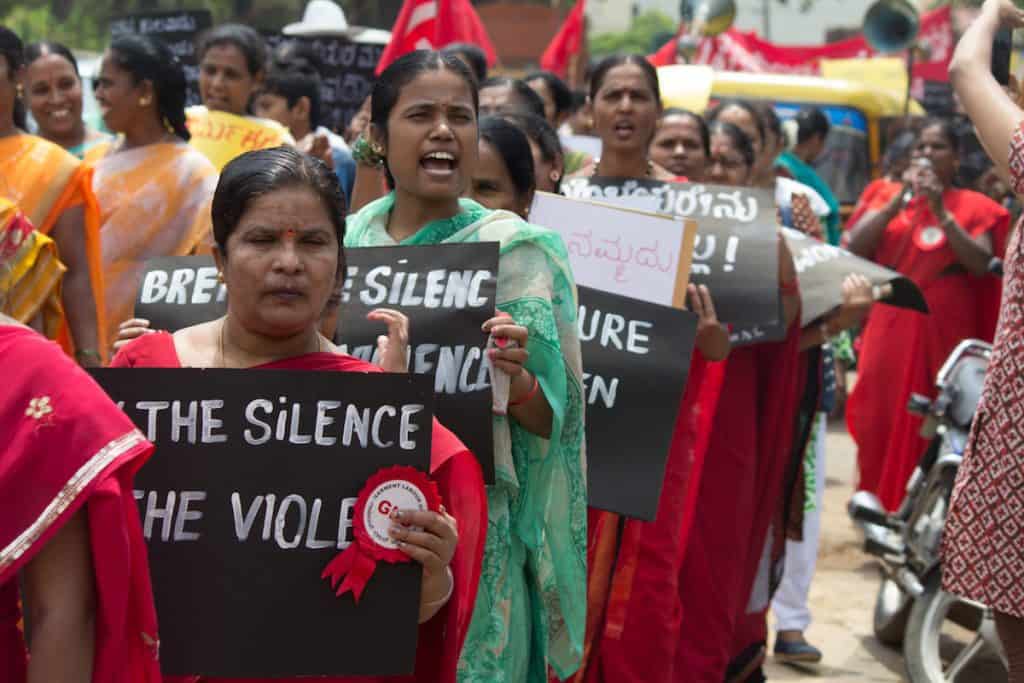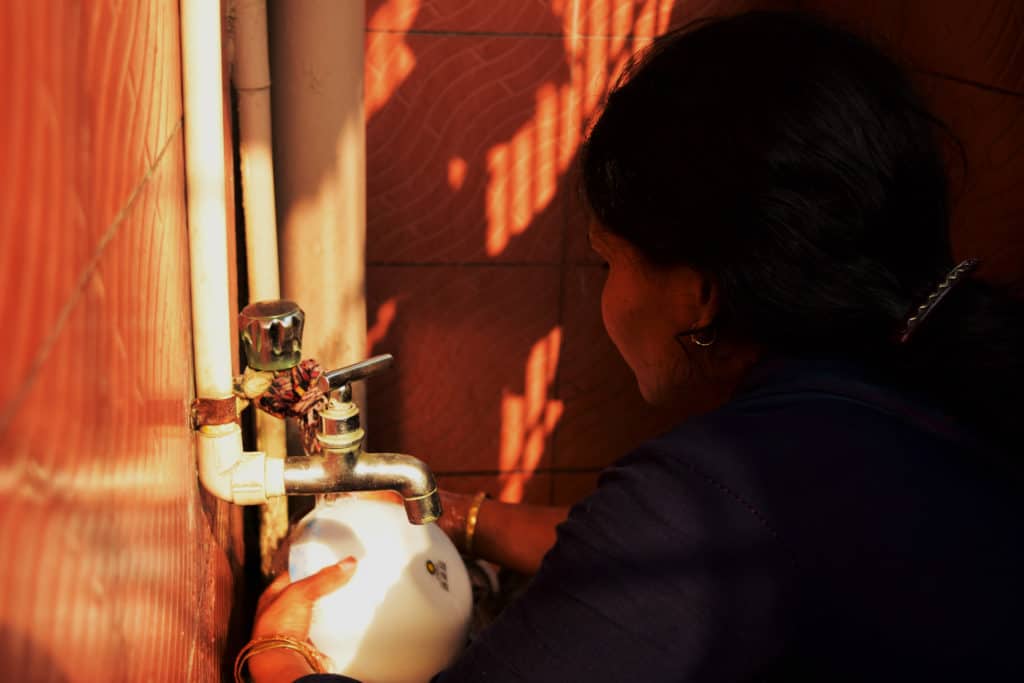For 15 years Sheela (name changed), a domestic worker, had been in the service of a single household, till the 2020 lockdown, when her employer left town and stopped answering her calls. She currently works at another house, earning less than half of what she used to.
Caught up in bad loans, her husband died by suicide in November 2019 leaving her as her family’s sole earner. The centrally sponsored Widow Pension scheme is erratic and unreliable, forcing her to search for other income sources. As a mother of two, Sheela has three mouths to feed, bills and fees to pay on this precarious earnings.
While the second wave has caused extreme distress on livelihoods and incomes for the urban poor, the impact it has had on female workers such as Sheela is far more devastating. In a study conducted by Azim Premji University’s Centre for Sustainable Employment titled State of Working India, 2021, the authors looked at the effect of the pandemic on India’s labour market through a gender lens.
Their conclusion: while the ripples created by the global health crisis have been felt across the country’s labour force, female workers have disproportionally hurt by it.
Data reveals new trends
According to official estimates from the quarterly Periodic Labour Force Survey released by the Ministry of Statistics and Programme Implementation, which the APU report quotes, female unemployment rate was 10.5 percent in January-March 2020, while it was 8.7% for urban males.
Read more: Women’s employment situation worsened during Lockdown in urban Karnataka
Rosa Abraham, one of the authors and a senior Research Fellow at the Centre says economic disruptions are felt far more sharply by women workers. Even during the aftermath of the 2018 demonetisation, 2.4 million women fell off the employment radar while 0.9 million men came into jobs.
The All India Central Council of Trade Unions claims women are over-represented in largely gendered occupations such as domestic and garment work. In response to this, Rosa says that male worker-oriented industries or sectors are likely to shed women laborers at the first signs of disruption. Citing how such job losses are detrimental to women workers at an economic and personal level, Rosa argues that a higher presence of women in the workforce may potentially imply better bargaining power and solidarity.

While 90% of the men re-joined the workforce after lockdown was lifted, the report shows that women were seven times more likely than men to lose work during lockdowns and eleven times more likely to not return to work even after a few months.
The data also highlights an interesting trend regarding the flux of women in the labour market. “What we found was that, the women who exited the workforce in April 2020, were not the same who made it back by the end of the year” says Rosa, hinting that a new group of women entering the workforce.
One reason could well be that the rising death toll from the second wave has resulted in the loss of male breadwinners in several households. Rosa also points out these new entrants are mostly sticking to daily-wage work, and not self-employment. Daily wage work is precarious and pays much less, a clear indication of this being a distress-driven entry fuelled by a sudden economic shock to household income.
Additionally, men coming back to work mostly returned as self-employed workers whose average monthly salary was around Rs.13,000, daily wage work only pays about Rs.7,000-8,000 a month.
The working reality
Dhanalakshmi R, who owns her own salon in Girinagar, opines that while the beauty industry employs both men and women equally, women are facing a fiercer pinch. “Male hairstylists were at least called on to provide haircuts and shaving services at the client’s homes during the lockdowns, but the same demand did not exist for female stylists,” she says. Unlike her, several salon owners chose to cut their labour force, especially women stylists, due to the dwindling demand.
Read more: What Women’s Day means for Bengaluru’s women labourers
Radha K, an activist with Domestic Workers Union, Karnataka, says that those working in apartments or residential complexes have completely lost their livelihoods due to the strict rules of Resident Welfare Associations. As for those working in individual houses, they are only called to the homes of aged persons. Employers are also extremely reluctant to let women living in slums or similar dense housing settlements to come work for them. Citing transmission fears, these households are also asking workers to work exclusively in their house without offering any economic compensation for this exclusivity.
Radha also points out that while employers have docked workers’ pay, the work loads have increased. Also, economic desperation is forcing women to work for very low pay as there are others willing to work for even lower pay. “Workers who used to charge over Rs1,500 for washing dishes before the pandemic are now willing to do the same work for Rs 500,” says Radha.

Jayamma S, a garment worker hasn’t been paid wages for the duration of the lockdown. Her factory is full of female workers like her. Her husband, who works at a local mill, had kept his job during the lockdown, but with a pay cut. She is anxious about her son’s college fees and a Rs 20,000 loan she had taken before the pandemic.
Impact on households
The social and personal impact of unemployment among women has been multifold. It has increased their burden of care work, deprived them of economic independence and has tied them to abusive households with no way out.
Global findings regarding care work found women undertaking more household chores than men. The numbers are much more skewered for Indian women, who shoulder the predominant burden of domestic or care work. “Women have had to navigate increased domestic work alongside pressures to cope with income losses”, said the report.
Read more: Pandemic epiphany: Why unpaid domestic work shouldn’t be the woman’s burden only
Echoing this, Rosa says they found that even women with jobs spent 2-4 hours in cleaning and cooking, due to more adults and children being at home. Though the burden of child-care responsibilities borne by women is less sensitive to changes in their employment status relative to men (Sevilla and Smith, 2020).
This employment and income loss has also had ramifications in terms of personal autonomy and independence in patriarchal households.
Personal autonomy
Radha who also works on the field, can attest that domestic violence has been on the rise since the lockdown, especially in the homes of unemployed, alcoholic males. Earlier, husbands would purchase liquor from their incomes, but now expect their earning wives, however meagre those earnings, to finance this need. Refusal is almost always met with violence. “While 50% of the women hand over their money to avoid violence, the rest believe their husbands are entitled to it and would prefer their household well-being over money” she says.

“One reason a survivor is unable to escape the household is because the abuser often controls access to finances and government IDs,” says Ashita Alag, Senior program officer at One Future Collective, a feminist non-profit.
The loss of employment at an individual level, Rosa says, translates to loss of autonomy, decision-making, mobility and networking. Work spaces are often where women can experience solidarity, personal camaraderie and support systems outside their household. the loss of which can have a deep personal impact.
Rosa believes job loss is not restricted to illiterate women. Even women with higher levels of education have been forced out. “These women would have experienced some glass ceilings being shattered or the blurring of lines of occupational segregation to some extent, all of which are now effectively reversed” she adds.
A gendered-lens in job creation, especially in the public sector, can help boost women’s share in the labour-force. Rosa also predicts a long-term impact in terms of more segregated workspaces and offsetting of gains made in bridging the wage gap. This can be tackled by an urban employment guarantee scheme with a female-driven focus, as well as expansion of the Mahatma Gandhi National Rural Employment Guarantee Act, 2005.
“At the Centre, we have advocated for greater investment in public infrastructure,” says Rosa, elaborating on how an adequate Anganwadi outlay will result in more women being employed as workers and mid-wives, while also creating an infrastructure oriented around creches, mid-day meals and social support that working women can rely on.
These will be means to generate employment while also providing supportive public health infrastructure.